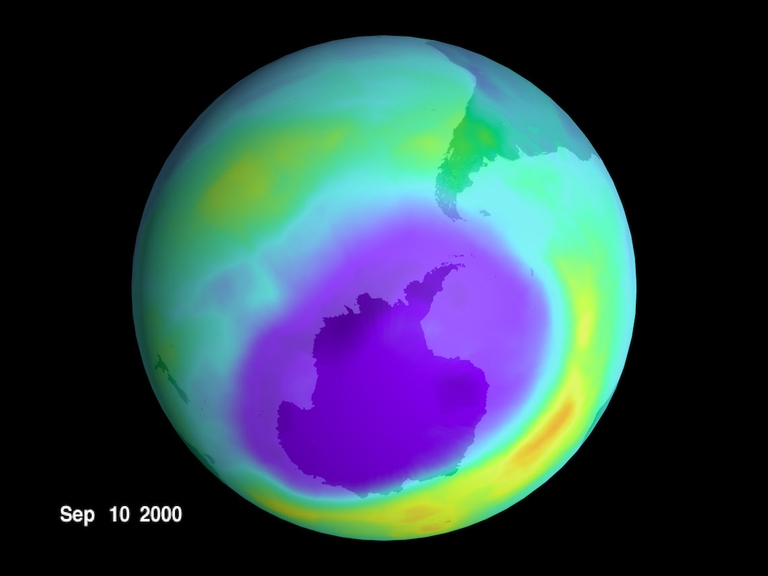
The International Day for the Preservation of the Ozone Layer commemorates the date of the signing of the Montreal Protocol. An environmental success for the international community.
Gli ultimi dati relativi al buco dell’ozono indicano un netto miglioramento rispetto al 2000. Dipeso dalle decisioni ecologiste prese trent’anni fa.
There’s good news for Planet Earth. The ozone layer hole above Antarctica, mainly caused by human activities, is healing, according to the latest scientific studies. This mean that the measures taken under the 1987 Montreal Protocol are paying off.
The hole in the ozone layer, which extends 20 to 40 kilometres above the Earth and protects us from hazardous ultraviolet rays, appears to have shrunk by at least 4 million square kilometres compared to 2000 levels.
Evidence comes from a study conducted in September 2015 and published in US journal Science. It shows that the portion of layer that has recovered over the past 15 years is the size the United States.
“We can say that, globally, the ozone hole shows signs of healing,” said the study’s authors. This is also due to a decrease in human-related chlorofluorocarbons (CFC) of 10-15 per cent, compared to the peaks registered in the early 1990s. This figure has also been confirmed by the latest four-year report of the World Meteorological Organisation and the United Nations Environment Programme (UNEP).
The Montreal Protocol involved the introduction of progressive bans on the use of CFC gases, largely used in air-conditioning, refrigeration, and industrial processes. According to Susan Solomon, Chemical and Climate Science professor at the Massachusetts Institute of Technology (MIT), “the adoption of the treaty will allow prevent 2 million cases of skin cancer each year until 2030, as well as numerous damages to eyes and immune system. It will also allow protect wildlife and agriculture”.
Siamo anche su WhatsApp. Segui il canale ufficiale LifeGate per restare aggiornata, aggiornato sulle ultime notizie e sulle nostre attività.
![]()
Quest'opera è distribuita con Licenza Creative Commons Attribuzione - Non commerciale - Non opere derivate 4.0 Internazionale.
The International Day for the Preservation of the Ozone Layer commemorates the date of the signing of the Montreal Protocol. An environmental success for the international community.
Ozone is a protective shield from UV rays. Damaging it means damaging the environment and our health.
This celebration aims to focus on the importance of safeguarding the ozone layer, essential to the life on earth.
South African court dismisses a major lawsuit by 140,000 Zambian women and children against Anglo American for Kabwe lead poisoning. A setback for affected communities enduring the lasting impact of lead contamination.
Controversial African land deals by Blue Carbon face skepticism regarding their environmental impact and doubts about the company’s track record, raising concerns about potential divergence from authentic environmental initiatives.
Majuli, the world’s largest river island in Assam State of India is quickly disappearing into the Brahmaputra river due to soil erosion.
Food imported into the EU aren’t subject to the same production standards as European food. The introduction of mirror clauses would ensure reciprocity while also encouraging the agroecological transition.
Sikkim is a hilly State in north-east India. Surrounded by villages that attracts outsiders thanks to its soothing calmness and natural beauty.
Sikkim, one of the smallest states in India has made it mandatory for new mothers to plant saplings and protect them like their children to save environment








